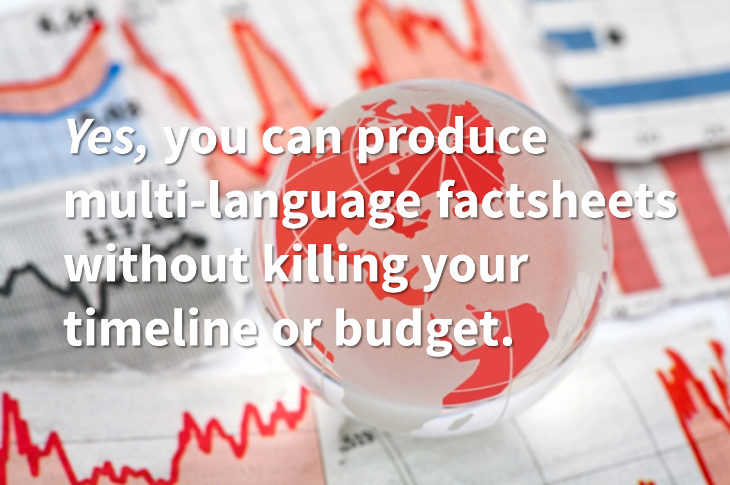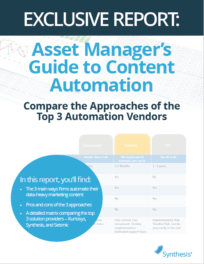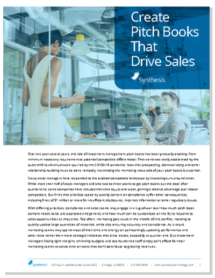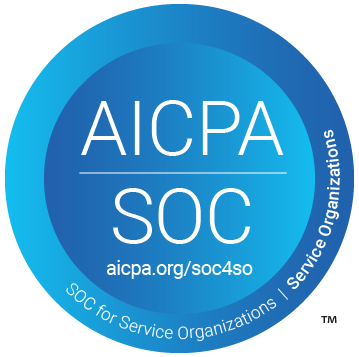The Art of Producing Multi-Language FactSheets
By John Toepfer
There is art to producing multi-language documents of any sort, but the bar is set particularly high when focusing on data-driven documents of a recurring nature. With documents like mutual fund factsheets, the cost and production timeline are key metrics of organizational success. A traditional process of shipping off document files to a translation agency and counting the days for receipt of finished foreign language material – and a large bill – can be ridiculous.
In the age of content management systems and Google Translate, there is definitely a better way.
First: What you should know about translation agencies
As you may know, a translation agency is largely a network of freelance translators, who are coordinated centrally by project managers and, ideally, sophisticated job management software. Most agencies use a combination of a language memory system and these freelancers to create a human-assisted automation process. The best of these agencies can adjust for industry jargon and client preferences and produce a fairly reliably accurate document.
We’ve worked with agencies that can also create good web-enabled system to system interchanges of documents and language fragments, usually based on a structured XML translation request.
The measure of a good agency seems to be the quality of its project managers. These are the people who coordinate the work, ride herd on the freelancers, and make sure the client’s requests get engrained in their tools and processes. However, not all project managers are good, and not all agencies have as sophisticated a process management and all the QC methodologies they claim to. You have to pick translation agencies carefully and be sure to check references.
(Sorry, I’m not going to endorse or trash any agencies by name in this article!)
At Synthesis, we’ve set up multi-language document production scenarios for a number of major asset managers over the years.
As a result, we have two key pieces of advice for investment marketers who are devising a strategy for producing multi-language fact sheets.
#1 – Use a component-based translation approach
Most agencies are comfortable working with full documents, and most use Microsoft Word as their standard tool. Quark or Adobe InDesign services will increase the costs measurably and neither is the right tool for mutual fund factsheets or similar material (at least not when produced in volume). Fortunately for anyone who has invested in a content-managed document production system, the key to translation happiness may already be within your reach. The document content should already be broken-down into libraries and components. If so, it’s very possible to manage changes and translation needs at an element or component level.
A good component-based automation solution can library all the localized variation of both paragraph text as well as labels and headings, and can track the relationships so that it is always clear when foreign language material is out of date. Thus, it’s easy to essentially write a report that says “show me all foreign language content that is out of date…and the target languages for which new translations are required.”
This “component-based” translation approach has two effects:
1 – It reduces ongoing translation efforts (and probably costs) by about 95%
2 – It eliminates much of the delay that translation efforts can introduce in the production timeline
Most compliance groups are also getting onboard with the validity of the component translation approach. Indeed, there is absolutely no need to fully re-translate all the sheets every production cycle for data updates or limited text updates. This adds completely unnecessary time and cost to the production process.
The next piece of the puzzle is: Exactly how will you get those language elements translated and back into the system…quickly, accurately, and economically?
#2 – Consider the pros and cons of insourcing vs. outsourcing translations
When it comes to making the decision to insource or outsource your translations, carefully consider the pros and cons of each option.

Option 1 – Insourcing
One option is to use in-house, in-country personnel to update the language that changes.
Your automation vendor can manage workflow processes to send language changes to known people and let them make the updates. Actually, even relying on Google Translate is not unheard of as an in-house function. We have specifically witnessed occasions where Google’s translation was preferable to the client than that done by the professional translator. (Let’s not call this the norm yet, though!)
This is definitely the cheaper option, but sometimes the cheapest option doesn’t make sense if it will negatively affect your production timeline or employee productivity and morale. You’ll need to have that discussion internally to determine if your internal teams can take on this responsibility without causing any significant problems in turnaround time, quality, etc. Also do you even have in-house people who speak Korean or an office in Portugal that you can co-opt into supporting you?
Option 2: Outsourcing
Your other option is to connect a professional translation service-bureau with your automation provider.
Per-word and project charges will apply, and sometimes marketing departments still check the work in-house – which seems odd – but it does occasionally turn-up some errors and inconsistencies that need to be addressed.The way it works, generally, is the automation system should queue-out the changes in language, component by component, to the service bureau, preferably in an organized XML or file feed that the two vendors have agreed on. The service bureau then returns the updated language to the system, usually in a 48 to 72 hour time-frame.
From a cost perspective, the first-time setup is where the majority of the cost comes into play. During the setup, the translation bureau will work with your automation provider to translate the full component library.
It may be challenging to get an accurate quote from the translation agencies, though.
Most translation agencies are very document-centric in how they price things. They won’t understand the true impact of a shared language library on setup costs or on recurring fees. They also have no idea how many words you’re going to change during production and thus what the recurring rates and turn times should be. You’ll have to work closely with someone senior at the translator, not your run-of-the-mill project manager, to get a realistic quote from them.
In addition to the one-time full-translation of all the elements in the language library, unless you can rely on in-country staff from your team, you should probably pay to have the translators do a full proof read on the first production-cycle output created by your automation vendor – just to be sure everything is correct. It’s unlikely that you or your vendor can really spot check your Greek or Japanese output to ensure everything worked as intended.
As mentioned previously, the ongoing translation costs for a system setup in this manner are usually very inexpensive, even using the service bureau. For our multi-language projects we frequently see production translation bills of under $1,000 – sometimes under $250 – even for large document sets! In fact, this brings up a hidden concern: Once a factsheet document set has stabilized in production, the number of components and words that need to be translated for each production cycle can be so small that a translator actually may quietly de-prioritize your work! How much incentive do they have to fire up people and processes to support $591 worth of revenue?
Doubt my math?
Here’s an example. Instead of translating a factsheet with 1,200 to 1,300 words into 6 languages (that’s 7,200 words), just a paragraph of 36 words may get translated into those 6 languages (that’s 216 words). At 25 cents a word (a very high rate in my understanding) this bill is only $54. Multiply this even by a bunch of paragraphs and the bill is still really quite small. (Remember, in a content managed system, the number of paragraphs of content is much smaller as so much of the language is shared.)
Some additional things to consider when using a translation agency:
- Actual translation rates vary on a complicated matrix of how well words and phrases are matched by the automated translation engines. They also vary by language (Korean is more expensive than German) and volume (small jobs are more expensive per word than large jobs)…so it’s hard to estimate translation costs in a generalized manner. An accurate estimate will only come from doing a full workup on the material and the production scenario.
- There may also be costs for the automation vendor and translation vendor to establish a reliable system-to-system workflow to support the translation. This is a one-time cost though and is usually worth the expense.
- The costs discussed in this document are only related to the translation costs, I’ve not attempted to describe or estimate the setup or per-page and support costs your automation vendor will present for a scalable multi-language solution.
If you are currently looking to streamline the production of your multi-language documents, or have more questions about this topic, feel free to reach out to me at [email protected].
Did you like this post? Please share! You can also subscribe to our blog.
Here are some related resources that might interest you:








 Compare the Top 3 Finserv Content Automation Vendors [White paper]
Compare the Top 3 Finserv Content Automation Vendors [White paper] Create Pitchbooks the Drive Sales [White paper]
Create Pitchbooks the Drive Sales [White paper] Build vs. Buy: Should Your Financial Services Firm Outsource or Insource Marketing Technology? [White paper]
Build vs. Buy: Should Your Financial Services Firm Outsource or Insource Marketing Technology? [White paper]  10 Tips for Rebranding your Fund Marketing Documents [White paper]
10 Tips for Rebranding your Fund Marketing Documents [White paper]



